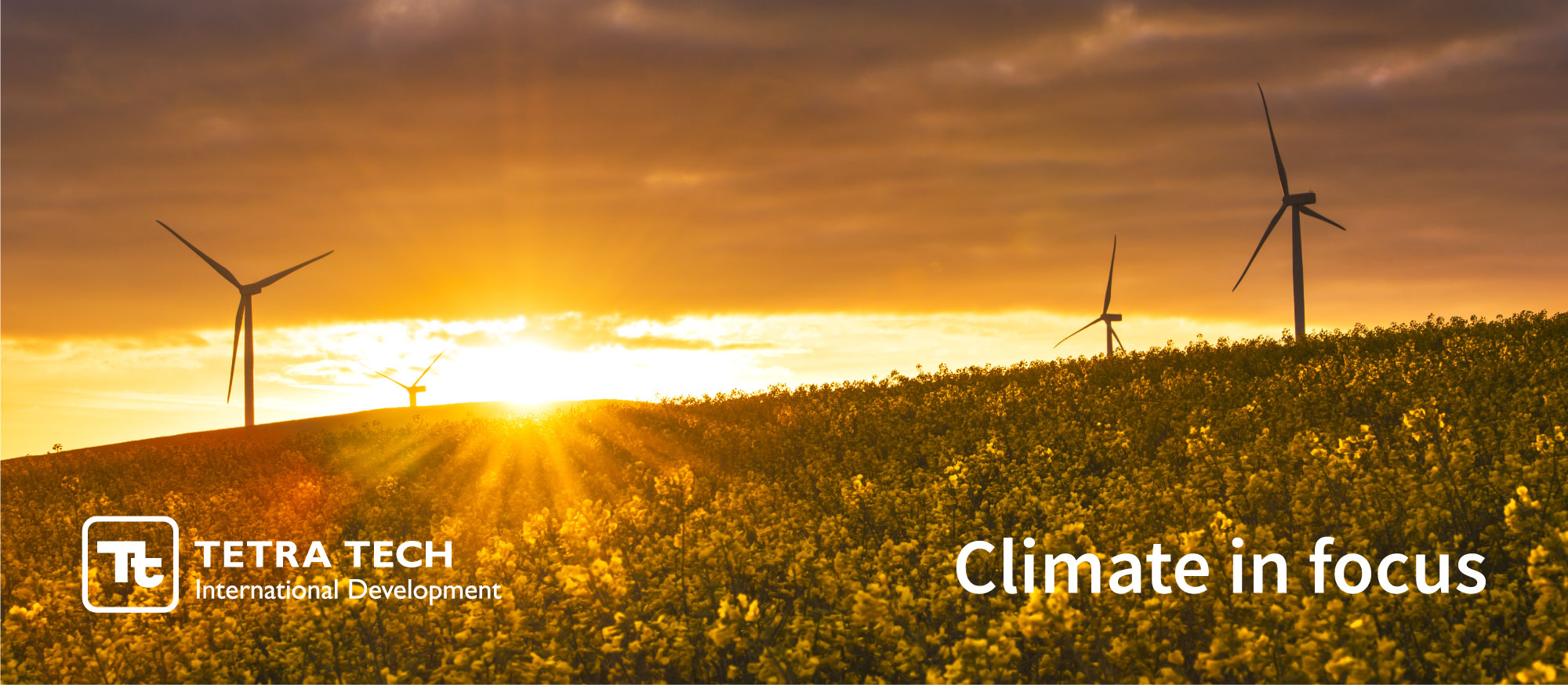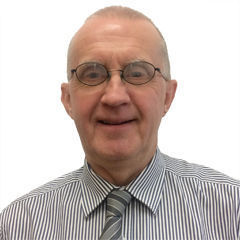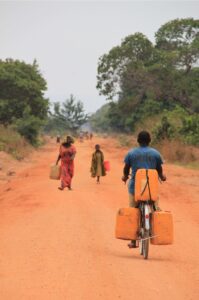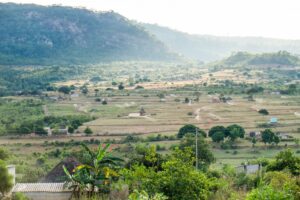
When leaders come together for the UK-hosted 26th UN Climate Change Conference next week, their hope is to leave Glasgow with strong commitments to reducing greenhouse gas emissions, building resilience and adapting to the impacts of climate change.
With decades of experience and a wide range of expertise under their belts, our climate and environment team are well prepared to turn the ambitious climate plans of our national and international clients into action. In this series of profiles – having started with an introduction to Sharmala Naidoo – we are sharing their insights and thoughts on COP26 and how they’re working to build a more sustainable world for all.
In this second part of our series, Charles Reeve, a Tetra Tech Principal focused on climate change, talks about his past and current climate and environment work and what his hopes are for the most anticipated global gathering of the year.
Charles Reeve has nearly 40 years’ experience managing climate and environment programmes. A multi-sector infrastructure development specialist, he has been the Team Leader on projects funded by UNOPS, European Commission, GIZ, USAID and FCDO, leading technical delivery on climate, environment, sanitation and development engineering. Charles currently works as a Principal on Tetra Tech climate change programmes and has been leading the Climate Resilient Infrastructure Development Facility programme since 2013, where he has overseen the assessment of more than 250 project opportunities. He lives in Pretoria, South Africa.
infrastructure development specialist, he has been the Team Leader on projects funded by UNOPS, European Commission, GIZ, USAID and FCDO, leading technical delivery on climate, environment, sanitation and development engineering. Charles currently works as a Principal on Tetra Tech climate change programmes and has been leading the Climate Resilient Infrastructure Development Facility programme since 2013, where he has overseen the assessment of more than 250 project opportunities. He lives in Pretoria, South Africa.
How did you get involved in climate and environment work?
My history with climate change goes back 45 years to my education. After my degree in geography and mathematics, I did a PhD at Exeter University in climate modelling. We researched the impact of global mountain chains – the Andes, the Himalayas and others – on global climate events.
My career then took me to India and China where I managed water projects for the World Bank and World Food Programme. Over the years, climate became a more and more integral part of my work as we started to feel the pressure of water scarcity across South Africa and the Southern African region.
What are the most significant changes you have seen in the last ten to twenty years?
There’s been a fundamental shift: when I started my climate work at university back in the late 1970s, our aim was to understand climate so we would be able to produce forecasts. Climate change was still considered a relatively natural phenomenon back then, something that has been fluctuating naturally over many hundreds of years.
In recent years, it has of course become increasingly evident that we, humankind, are responsible for the climate shifts that are happening now. So in my experience, climate and climate change have gone from being an abstract, theoretical subject to one that has become a very real and pressing. We understand how climate works now – the task is to find practical ways to mitigate and adapt to it.

What’s been the most interesting aspect of working on different climate change programmes?
From 2001 to 2009, before joining WYG and Tetra Tech, I worked as a Water Advisor for the European Commission in South Africa. Prior to that, I had managed projects in the Southern Africa Development Community region. It was during that period that climate change was starting to come on the international agenda – but there was so much uncertainty around it that no one in the sector knew what to do about it.
When you deal with water, you deal with fairly deterministic computer models, engineering and numbers. You are able to say: “if this happens, it will have this effect and here’s how we’re going to solve it”. But that doesn’t work with climate change. We do not know what, and how quickly, it is going to happen, how different places are going to be affected and the impact it is going to have on people, wildlife, agriculture and ecosystems.
When I got involved in preparing the Transboundary Water Management Plan in Southern Africa for what is now the Foreign, Commonwealth and Development Office, we had to develop an approach that would take this uncertainty into account. The programme then morphed into CRIDF, Tetra Tech’s Climate Resilient Infrastructure Development Facility programme. One of the primary aims of our work on CRIDF is to equip people with the tools and skills they need to deal with this whole subject of climate uncertainty and how to integrate it into their thinking and planning. This is what continues to make my work so exciting – initially as Technical Director, and now as the programme’s Team Leader.
What are your hopes and expectations for COP26?
We are at a critical junction now. The upcoming COP26 summit is part of a long series of events – some of which, like the Paris Declaration in 2015, have been significant, others less so. But it is a fact that climate change is happening and that we only have a limited window of opportunity to avert the worst.
Over the last 18 months we have had to deal with events no one has witnessed before – the health emergency, the tragic loss of life and the economic impact everywhere in the world – the recovery from all that has just started and is going to take a long time. But the climate emergency is on a whole different scale. Unlike with the COVID-19 pandemic, you don’t see people dying from it every day even though it’s exactly what’s happening – it just happens in a different way. My hope for COP26 is that world leaders finally go beyond talking and deliver on their promise to tackle the greatest global challenge in human history.
In your opinion, what is the key issue that needs to be addressed during COP26?
The key issue is money: we need more financial support from different people and parties for the countries that will inevitably be hit hardest by climate change, otherwise many of them will cease to exist. But it is not just about making financial decisions that can keep the 1.5C degree target in reach: in Southern Africa, for example, this is no longer realistic for us because we are already beyond that. Even if we stopped all greenhouse gas emissions today, we are going to see dramatic changes over the next 50 years. Adapting to the changing climate, to me, is therefore just as essential as mitigating it – and we need better plans and more finance in place to deal with it.

With your career working in climate and environment, you have seen how the industry has changed in terms of the skills and people needed. What is your advice to young people who would like to work in international development?
We still need good science and people that understand the challenges of the sector, that hasn’t changed. But young people must also be able to juggle the complexity of international development: the politics, the work on the ground, the uncertainty of it all. I think there’s a passion for change, and that’s so important. After all, they are the ones that will feel the impacts of climate change and who will be the first generation that, historically, is not going to be better off than the ones before them. They are rightly crying out to see action taken.
People always think this problem is too big to deal with, that there’s nothing individuals can do. But that’s not true. You can make a difference by changing what and how you do things in your life. You can protest, bring people together and change politics and governments if you’re persistent enough. We cannot undo decades of global inaction, and I’m horrified about the impact it will have on future generations and global ecosystems.
The truth is, we have made mistakes. But maybe we still have time to turn things around.
PHOTOS: CRIDF